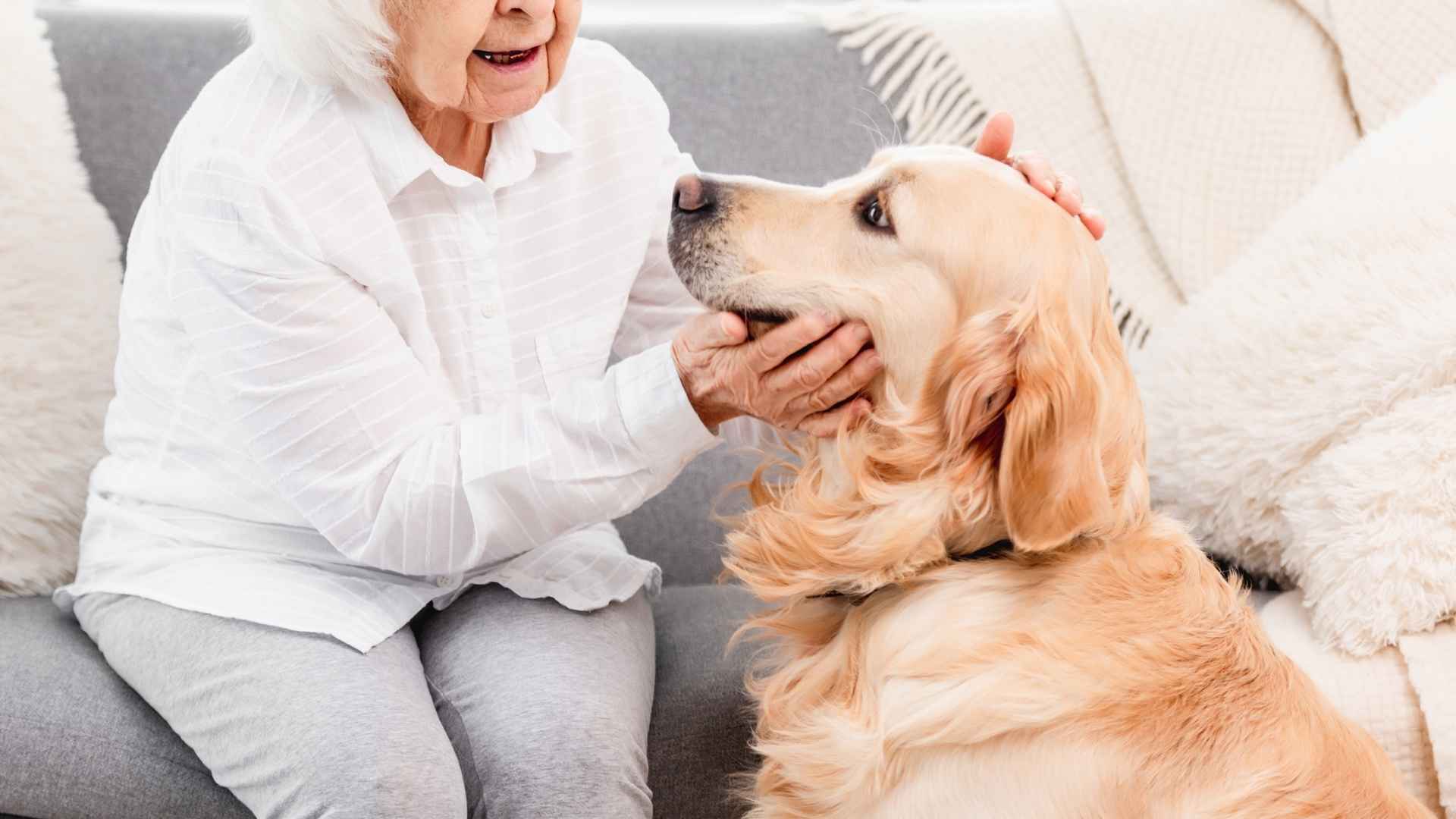For many Baby Boomers, the right dog isn’t just a pet—it’s a companion, a walking partner, and sometimes even the best excuse to chat with neighbors. But choosing the perfect breed at this stage of life means thinking beyond puppy-dog eyes.
Energy levels, grooming needs, temperament, and size all play a role in finding a match that fits seamlessly into your lifestyle. The good news? There are breeds out there that seem tailor-made for this chapter of life—dogs that bring joy without overwhelming demands, offer loyalty without constant chaos, and still have just enough spark to keep things interesting.
Whether you’re looking for a gentle lap companion, a cheerful walking buddy, or a dog who can adapt to a quieter home, the following breeds have the personality and charm to fit right in. Prepare to meet nine canine contenders that just might steal your heart (and your favorite chair).
Dog Breeds For Baby Boomers That Will Melt Your Heart
1. Cavalier King Charles Spaniel

Breed Profile
Size: 12 to 13 inches at the withers
Weight: 13 to 18 pounds
Temperament: Gentle, affectionate, sporting in character
Cavaliers combine toy-breed affection with a light spaniel spark, so they fit comfortably in slower households yet still enjoy a little action. Many Baby Boomers value how people-oriented these dogs are and how naturally they mingle during neighborhood chats. Their hallmark is a sweet, melting expression that matches an easy, companionable nature.
Keep exercise pleasant and consistent: Two unhurried walks and relaxed sniffing games meet most needs. Because they descend from sporting stock, they also perk up for casual fetch or a short park loop. Mental play keeps them cheerful on rainy days.
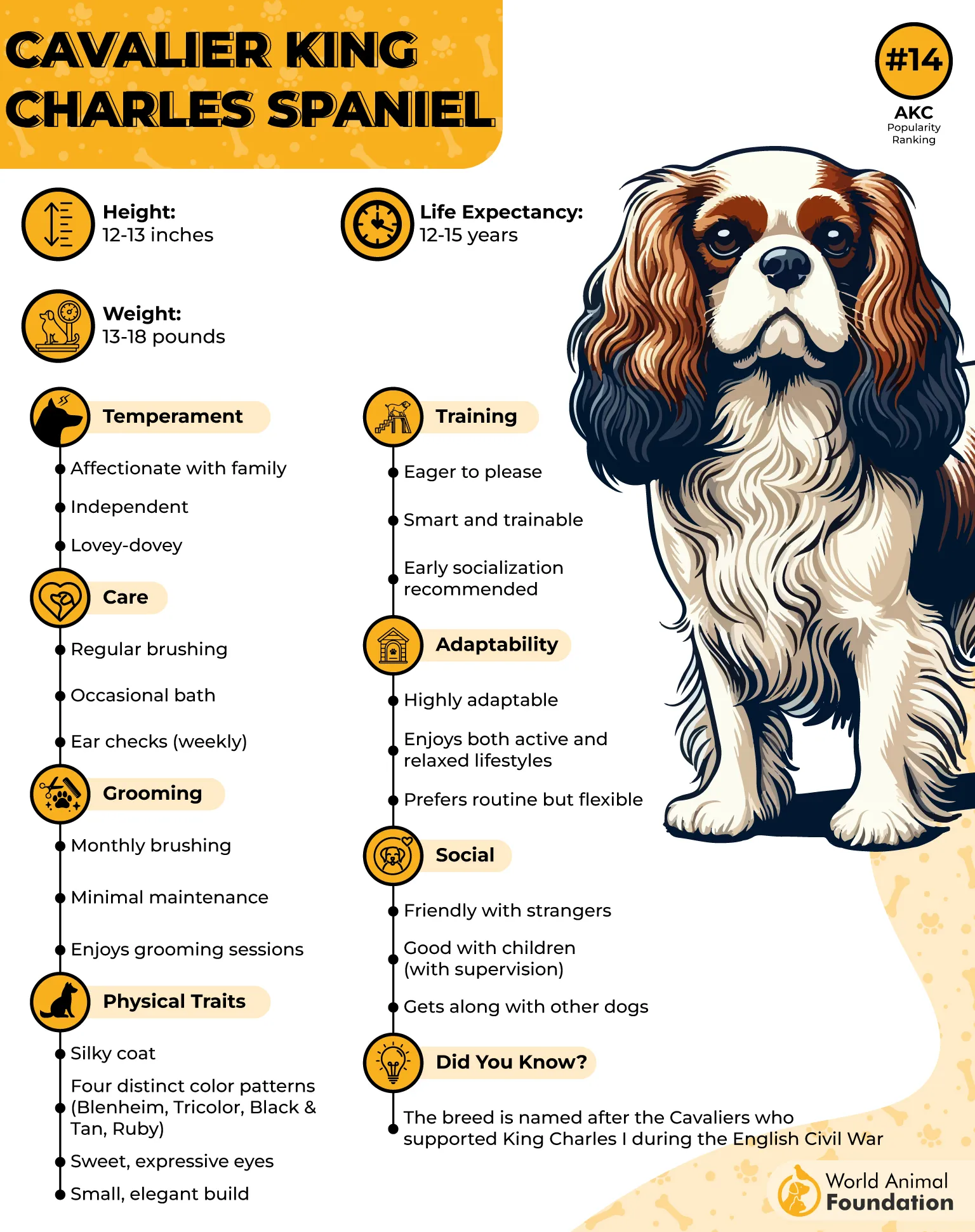
Coat care is straightforward with regular brushing to keep silky feathering neat on ears, legs, and tail. The standard calls for a natural look with no sculpting, so a gentle comb-through a few times a week goes a long way.
Training lands best with rewards and routine. They are sensitive to tone, ready to please, and generally polite with visitors when socialized thoughtfully.
For Boomers who entertain grandkids, the Cavalier’s typically friendly attitude is a plus. Their moderate size also makes stairs, car rides, and condo living simpler.
Quick tips
Use a soft-bristle brush on ear feathering, then a comb to check for hidden tangles.
Mix short scent games into evening walks to satisfy their spaniel curiosity.
2. Maltese

Breed Profile
Size: About 7 to 9 inches tall
Weight: Under 7 pounds, 4 to 6 pounds preferred
Temperament: Gentle-mannered, affectionate, lively, and playful
Start with the signature look. The Maltese has a single, floor-length white coat that can be kept glamorous or clipped short for easy upkeep. The texture should be long, flat, and silky, with no woolly curl, which is why routine brushing prevents mats and keeps the shine.
History lovers will enjoy this breed’s ancient résumé. AKC traces the Maltese back for centuries as a lap companion of the elite, yet today’s dogs are lighter and more refined while keeping their friendly charm.
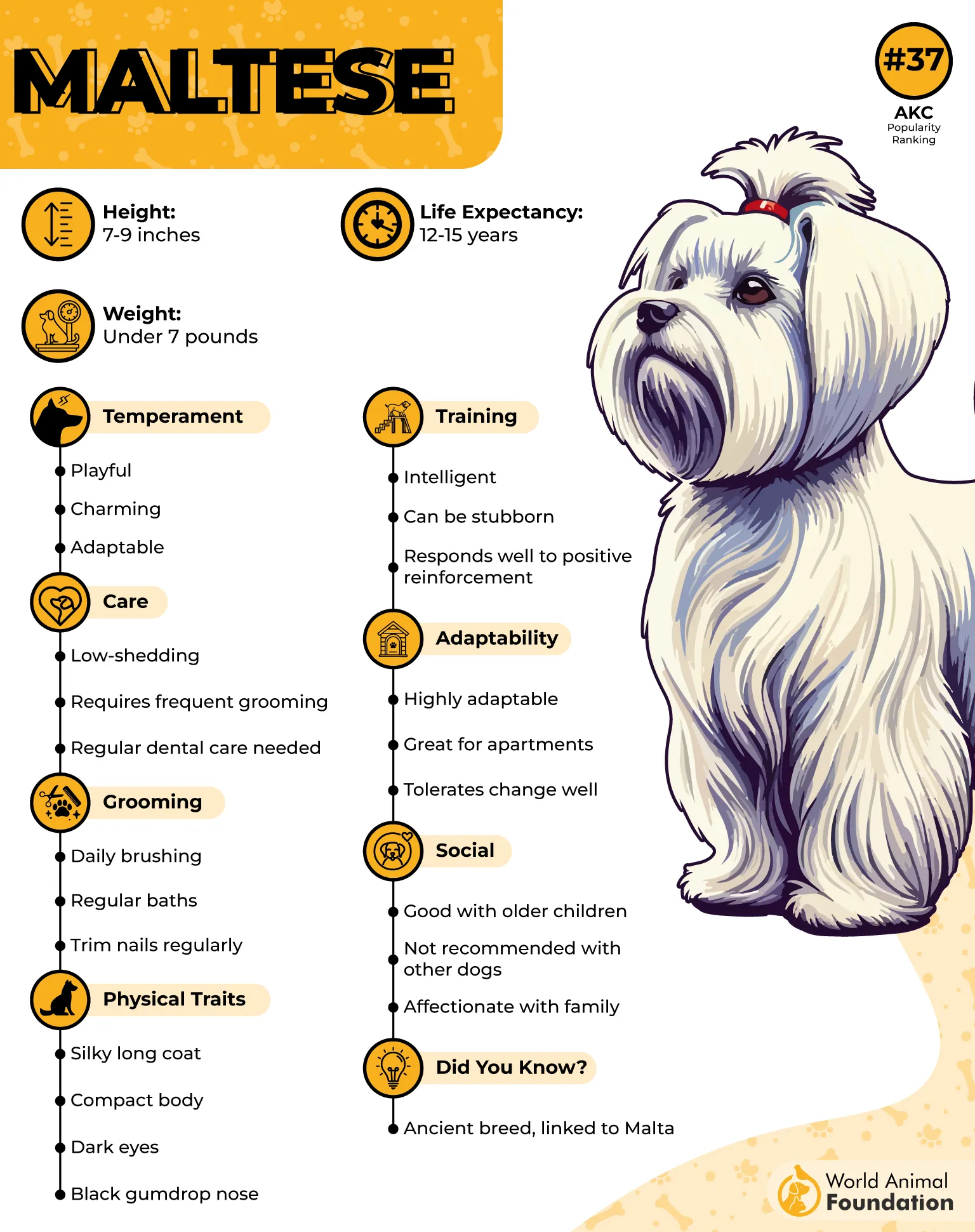
Living spaces are rarely an issue thanks to toy size and a portable frame. Stairs, small yards, and quick car hops are manageable, and many Boomers appreciate how a Maltese can join errands without fuss.
Training works best in short, upbeat bursts. These dogs are responsive and people-focused, so early socialization and tiny treats keep skills sharp without long sessions.
Activity needs are modest. Indoor play, hallway fetch, and a couple of brisk neighborhood loops usually cover the bases, and a tidy pet trim can cut day-to-day grooming time without losing that classic Maltese sparkle.
Quick tips
If you prefer low maintenance, ask your groomer for a pet-length trim and schedule routine tidy-ups.
Keep a pocket pouch of pea-sized treats to reward quiet manners on walks and café stops.
3. Shih Tzu
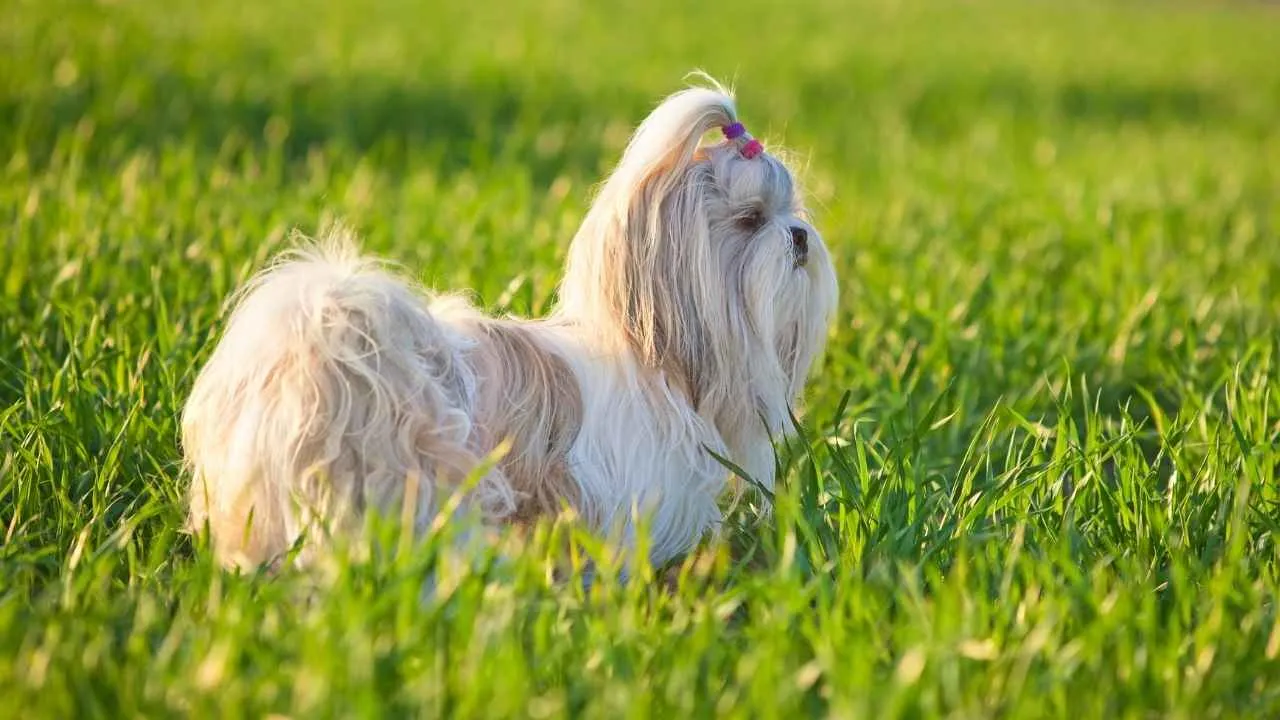
Breed Profile
Size: Ideally 9 to 10.5 inches tall; not less than 8 nor more than 11
Weight: Ideally 9 to 16 pounds
Temperament: Lively, alert, friendly, and trusting expression
Bred for palace companionship, the Shih Tzu lives to be near their person and brings a confident, good-natured vibe to the home. That heritage shows in a sturdy toy build and a jaunty carriage that turns everyday strolls into mini parades.
Daily movement matters, yet this is not a trail hiker. Short walks, indoor play, and puzzle breaks meet needs, and because this is a brachycephalic breed, cooler hours and water breaks keep outings safe. They do best with gentle exercise and are heat-sensitive.
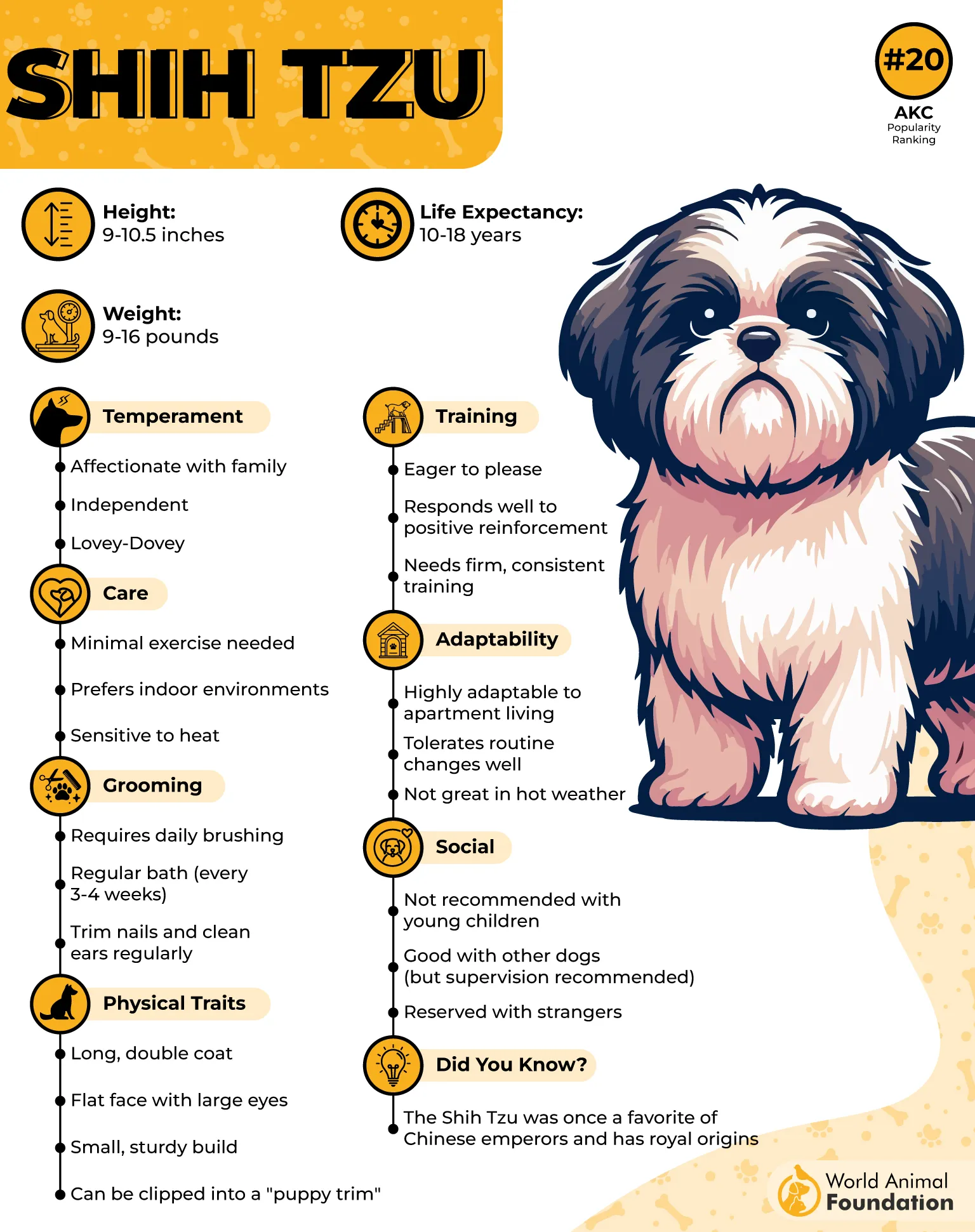
Coat care is a commitment, whether you keep a long show curtain or a practical low clip. Bathing about every three weeks and frequent brushing to prevent tangles, with weekly ear checks to stay ahead of irritation.
Training is pleasant with consistency and praise. Many will announce visitors, so teach a quiet cue and reward calm greetings; early classes help channel that sociable streak.
For Baby Boomers, the appeal is clear: apartment-friendly size, a sunny temperament, and an enthusiasm for couch time between short bursts of play. Plan for companionship, though, since they can miss you if left alone too long.
Quick tips
Schedule a regular grooming calendar and stick to it to avoid mats and eye irritation.
On warm days, keep walks brief, offer shade, and bring a collapsible water bowl.
4. Golden Retriever
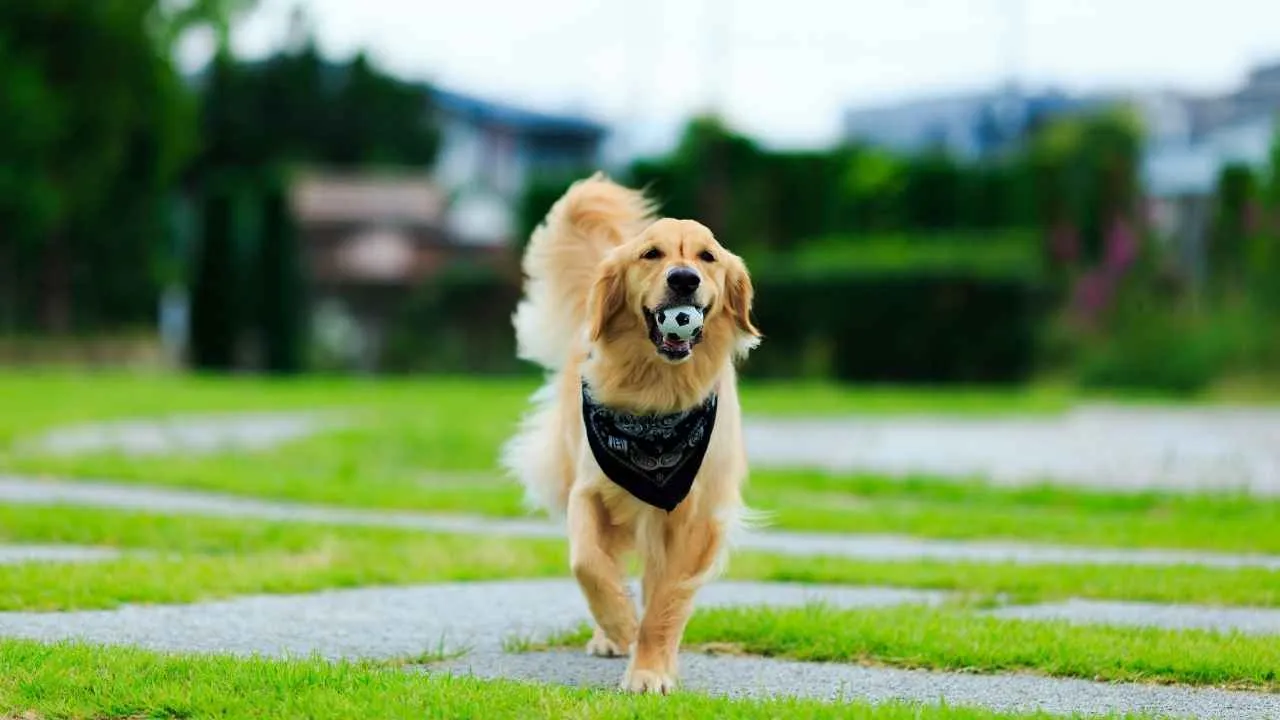
Breed Profile
Size: 21–24 inches
Weight: 55–75 pounds
Temperament: Intelligent, loyal, affectionate
Golden Retrievers bring radiant energy and friendliness—breeds that were born to retrieve but live to brighten your day. As noted by PetMD, they are one of the most popular breeds for families, thanks to their trainability and warm, steady temperament.
They adapt well to activities like swimming or fetch, but also enjoy relaxed family strolls. Their moderate energy means even senior owners can keep pace with a daily walk that refreshes both.

Their double coat is plush and water-resistant yet sheds heavily, so regular brushing is essential to keep the home fur-minimal and the coat healthy.
Boomers often appreciate how Goldens intuitively respond to emotion—they’re as tuned into a gentle mood as they are ready for a lively outing. Just be prepared for the shedding—it’s part of their charm.
Quick tips
Brush at least three times a week to manage shedding and keep the coat smooth.
Encourage gentle swimming or fetch to support their retriever nature without overtaxing joints.
5. Miniature Poodle
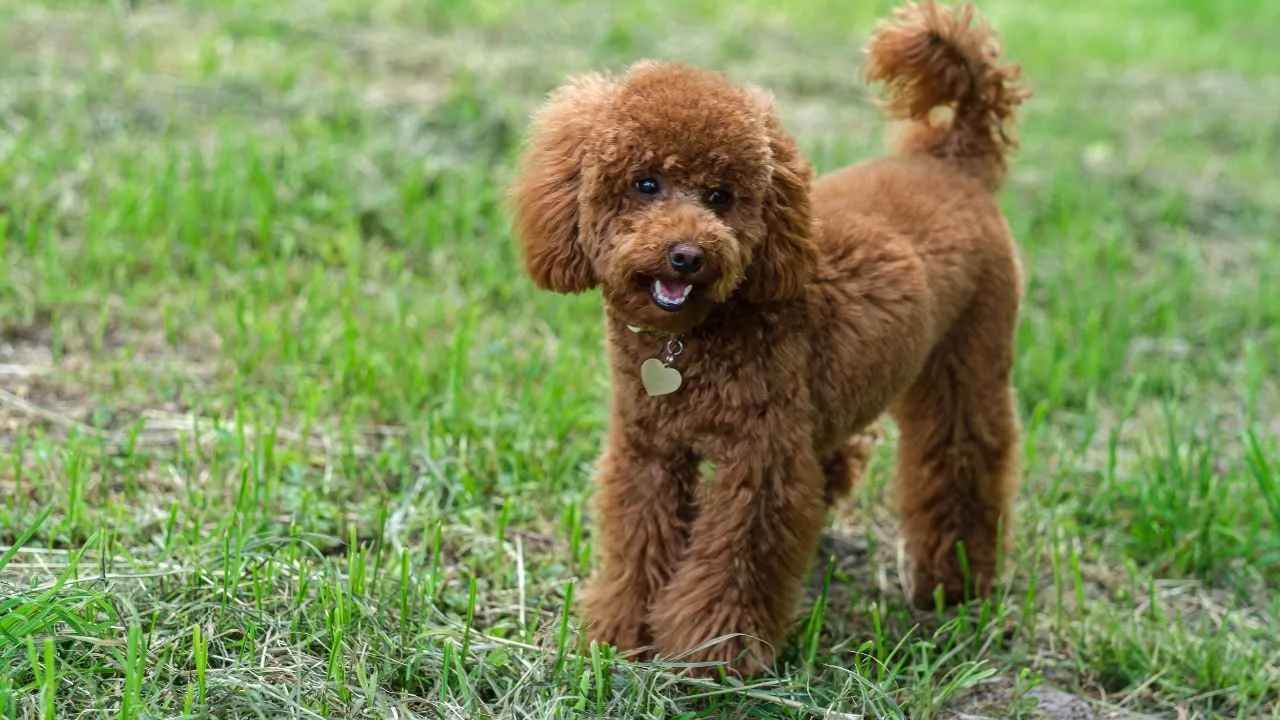
Breed Profile
Size: About 11–15 inches
Weight: 26–31 pounds
Temperament: Intelligent, social, affectionate, alert
The Miniature Poodle brings elegance and smarts—often feeling more like a lively thinker than a typical companion dog. Purina notes their affectionate nature and that they enjoy active walks and verbal interaction.
This breed thrives on participation, whether following you into the garden or alerting at the door, they stay engaged. Their curly, low-shedding coat needs grooming every other day to stay tidy.
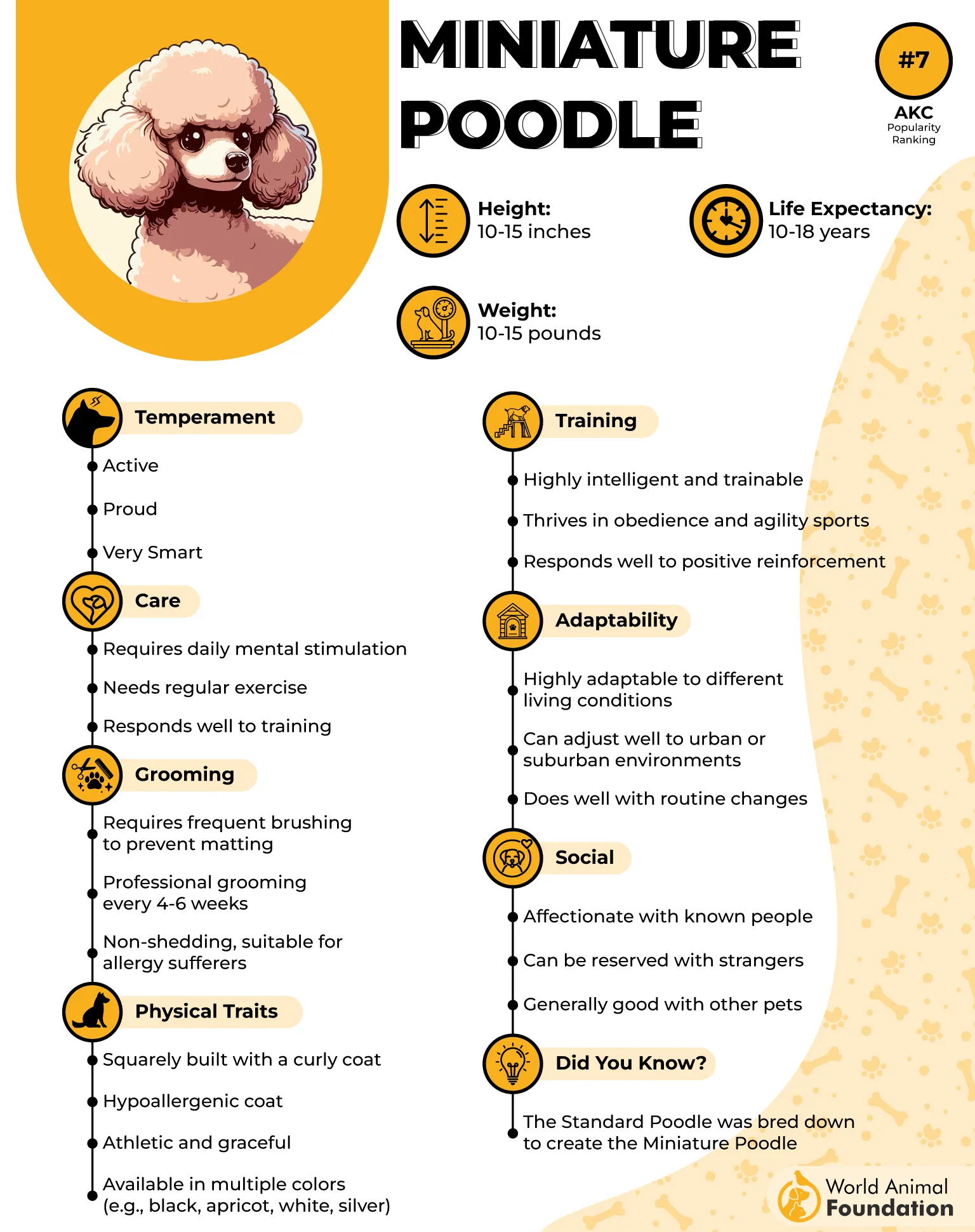
Purina also flags health considerations like patellar luxation, PRA, and leg or eye conditions—regular screening helps avoid surprises.
Many Boomers value the Poodle’s hypoallergenic coat and sharp mind—they adapt easily to new routines and learn quickly, making them a delightful and low-shedding partner day in, day out.
Quick tips
Set a grooming routine—every other day, brushing keeps curls tidy and minimizes knots.
Schedule periodic health checks for hips, eyes, and knees to stay ahead of common Poodle issues.
6. Pug
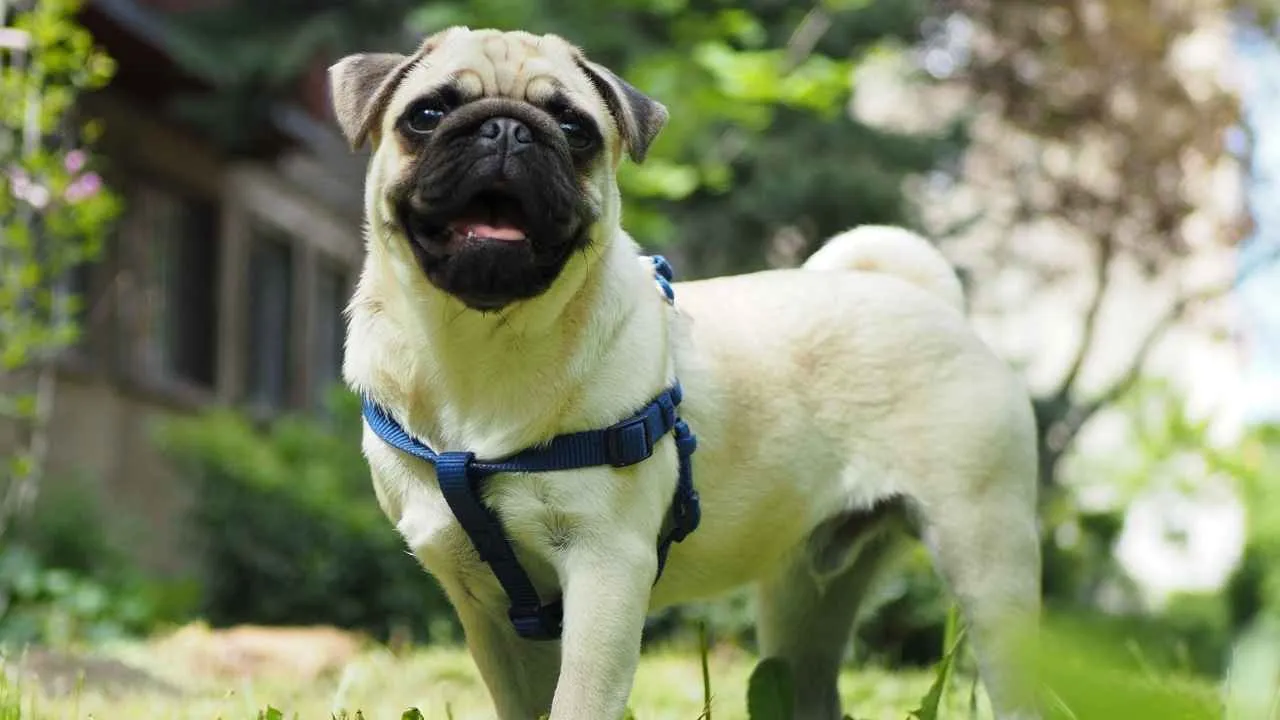
Breed Profile
Size: 10–13 inches tall
Weight: 13–18 pounds
Temperament: affectionate, sociable, playful, clownish
The Pug is a compact comedian—once a companion of emperors, today a lovable household character. Their affectionate and intelligent nature makes them a joy to have around.
With modest exercise needs (under an hour a day), Pugs fit well in apartments yet still enjoy a playful session or easy walk. Just keep an eye on their breathing—flat faces can struggle with heat and exertion.
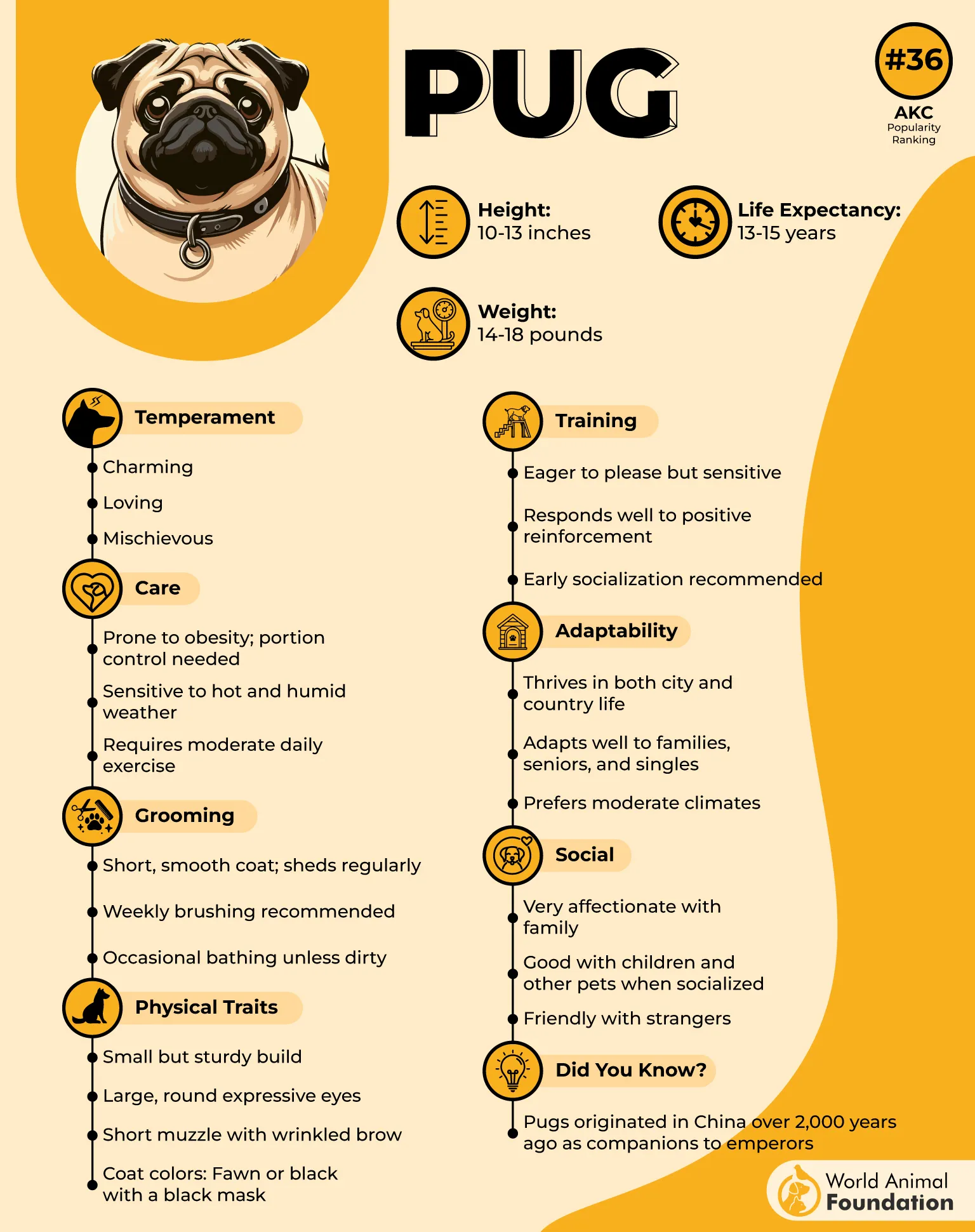
PDSA warns about typical brachycephalic health issues like breathing difficulties, eye and skin conditions, and joint concerns. Choosing a puppy from responsibly screened parents helps reduce risks.
Baby Boomers often adore the Pug’s big personality in a small package—they’re chatty, loyal, and offer companionship without long walks, though they do need close attention to comfort and health.
Quick tips
Limit outdoor activity in warm weather—Pugs overheat easily due to their facial structure.
Periodically check facial folds and eyes for irritation, and clean gently to prevent infection.
7. Yorkshire Terrier

Breed Profile
Size: Toy; typically 7 to 8 inches tall
Weight: Up to 7 pounds
Temperament: Clever, spirited, affectionate
Yorkies began as gritty little ratters in English mills, which explains the confident stride and big-dog attitude in a tiny frame. The hallmark coat is long, glossy, and parted from muzzle to tail, giving the breed its polished silhouette when kept full length.
Grooming is a commitment with a fine, hairlike coat texture that mats if neglected. Daily brushing and consistent trims keep tangles at bay, while a neat pet cut makes upkeep realistic for busy schedules. The floor-length look is optional, and many owners choose practical shorter styles.

Training goes smoothly with upbeat sessions and tiny rewards. This bright toy loves puzzles and obedience games; start early to curb the tendency to sound off at doorbells or squirrels. They are quick learners when socialization begins young.
For Baby Boomers, portability is a major plus. Stairs, rides, and small spaces are easy with a dog this size, yet you still get a lively walking buddy for short neighborhood loops.
Health watch-outs include dental care due to small mouths and potential tracheal sensitivity. Use a harness rather than a collar for pressure-free strolls, and keep regular vet cleanings on the calendar.
Quick tips
Keep a pin brush and comb by the sofa for quick nightly detangling.
Teach a “quiet” cue early to manage enthusiastic alerts.
8. Shetland Sheepdog
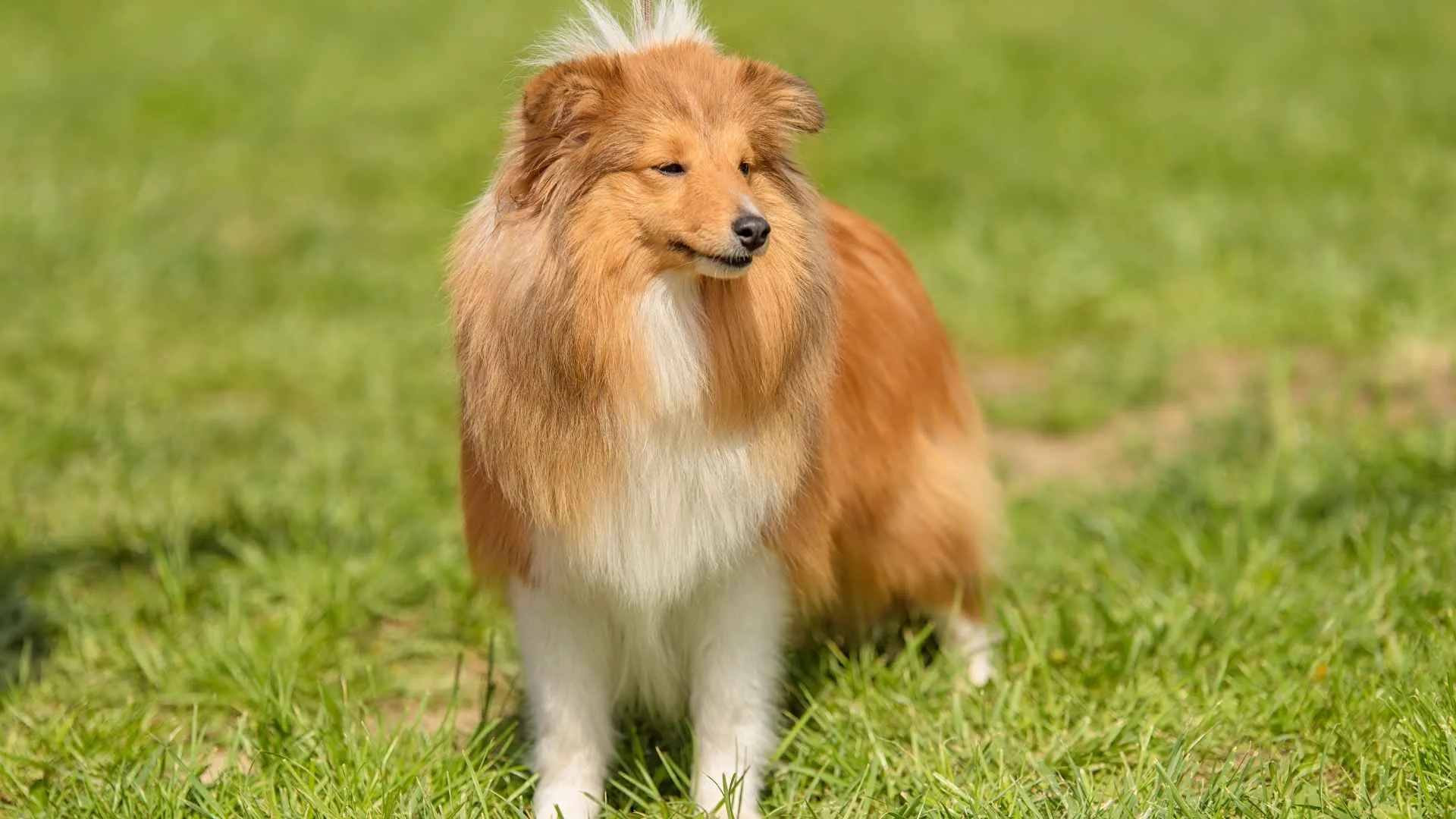
Breed Profile
Size: 13 to 16 inches at the shoulder
Weight: Generally 15 to 25 pounds
Temperament: Eager to please, energetic, affectionate
Sensitive, bright, and tuned to their person, Shelties thrive on having a job. Trick training, rally, or a few minutes of nose work turns that quick mind into a daily win. Moderate sessions beat marathons when you vary tasks and keep the brain busy.
Exercise needs trend higher than most small breeds. Aim for purposeful walks plus a structured game like fetch or a simple backyard agility setup. Chewy suggests about an hour of daily activity, split into manageable chunks.
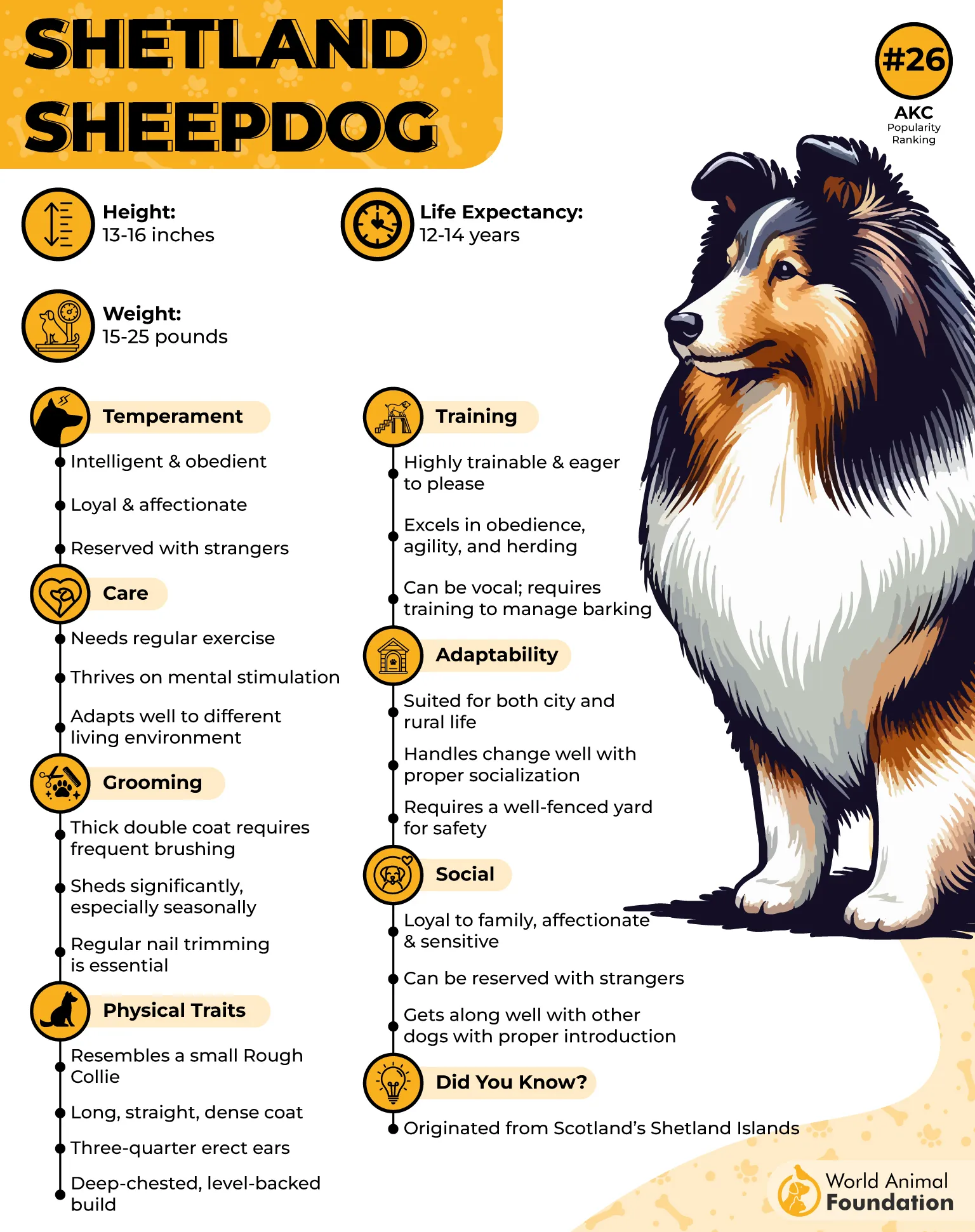
Coat care is a rhythm: regular brushing keeps the dense undercoat from matting and makes seasonal “coat blowing” far less dramatic. Focus on friction zones behind the ears and under the front legs, then finish with a quick nail and teeth check.
Some Shelties announce visitors with gusto. Reinforce a calm greeting, reward silence, and give a stable place cue near the door so the bark turns into a sit.
For many Boomers, the payoff is a devoted companion that learns house routines fast and loves to participate. Keep training fresh and gentle to match their responsive nature.
Quick tips
Brush two to three times weekly, daily during seasonal sheds.
Rotate mental games to prevent boredom and nuisance barking.
9. Siberian Husky
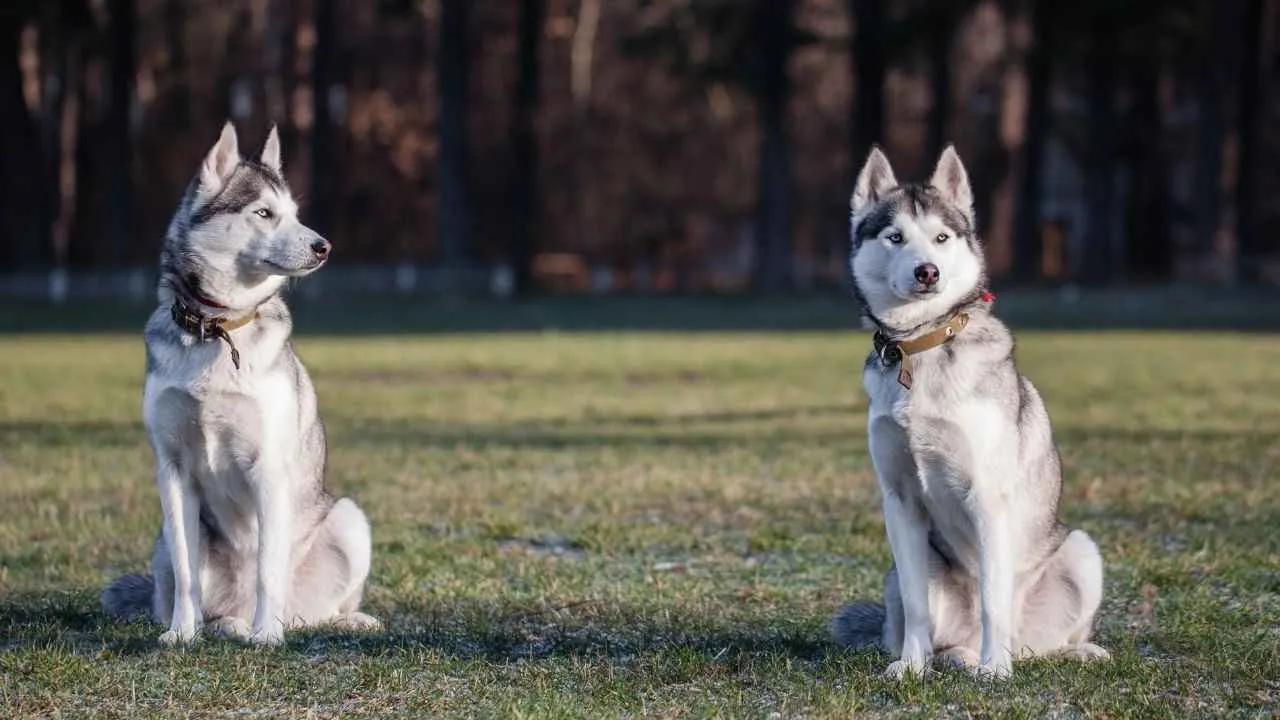
Breed Profile
Size: Males 21 to 23.5 inches; females 20 to 22 inches
Weight: Males 45 to 60 pounds; females 35 to 50 pounds
Temperament: Friendly, outgoing, independent
The Siberian Husky is a medium, athletic sled dog built to pull light loads over long distances with a smooth, efficient gait. That working heritage shows in stamina, curiosity, and a social nature that reads more “host” than “guard.”
Daily exercise is non-negotiable. Think long walks, hikes, or jogs paired with brain work to channel problem-solving instincts. They bore easily, so variety matters, and secure fencing is essential for these famous escape artists.
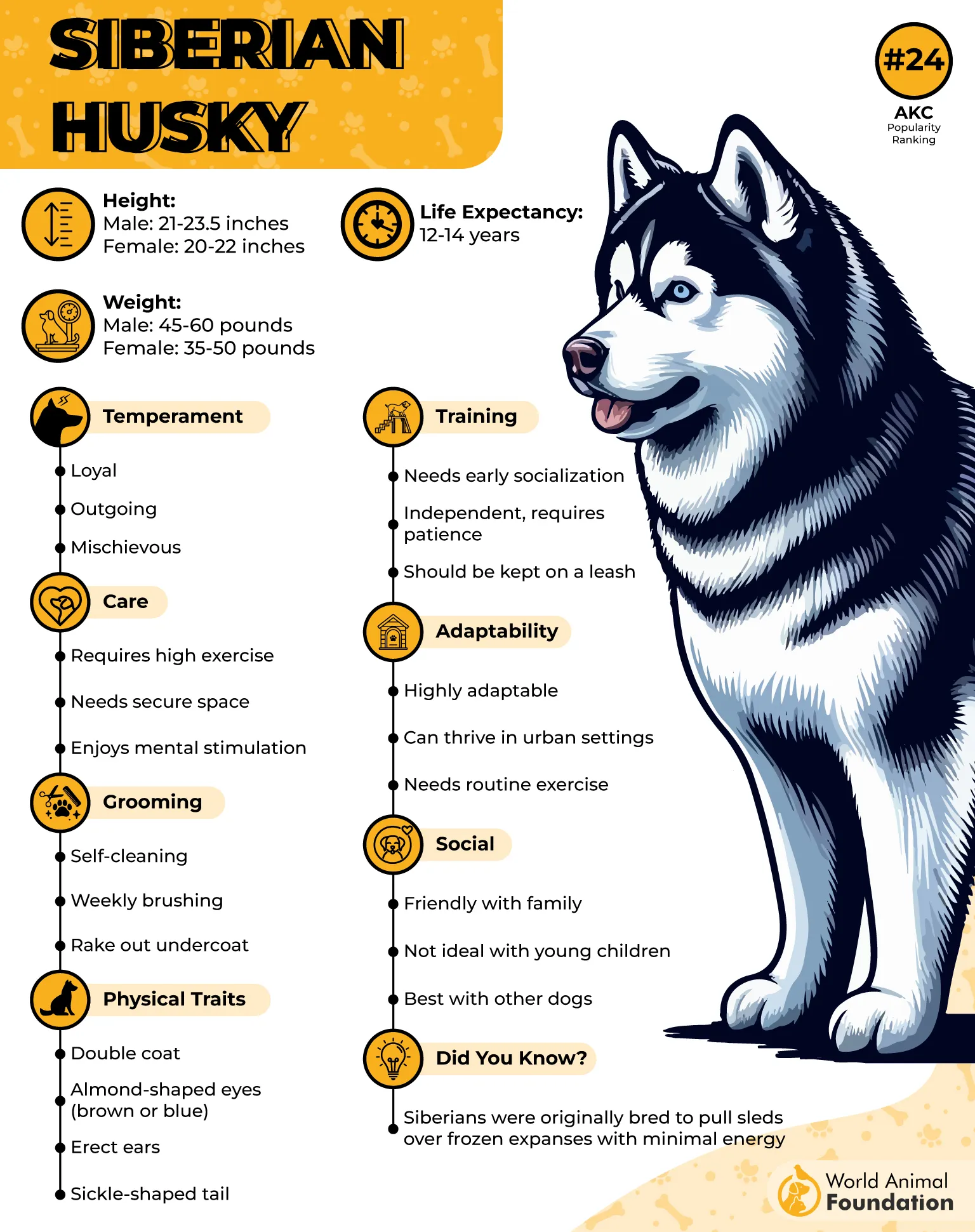
Training should be structured and consistent. Short, focused sessions with high-value rewards keep an independent thinker engaged, and early socialization shapes polite play with dogs and people.
Grooming is straightforward but frequent during shed seasons. Expect heavy undercoat blowouts twice a year, regular brushing several times weekly, and baths as needed to keep the double coat healthy.
For Baby Boomers who love the outdoors and have time for activity, a well-managed Husky can be a joyful partner. In warm climates, schedule outings at cooler hours and provide ample shade and water.
Quick tips
Use an escape-proof yard or secure harness, and keep recall on leash practice.
During spring and fall, add an undercoat rake to your brushing routine.
Conclusion
Choosing the right dog in your golden years is a thoughtful search, not a guess. Start with your routine, home layout, and travel plans, then match energy levels and grooming needs to real life. The breeds above show how the human-canine bond can be calm, joyful, and active in just the right measure.
Pick a companion you can train with short, positive sessions, and set a simple schedule for walks, play, and rest.
Decide based on temperament, size, and the level of care you can comfortably provide. Consistent routines improve behavior and keep you both content. If you have prior training experience, use it; if not, a beginner-friendly class makes a strong foundation.
Your choice should be based on joy and sustainability, not trends. When the fit is right, companionship feels effortless, your days stay active, and home feels fuller. That is the promise of the right dog for this stage of life.


